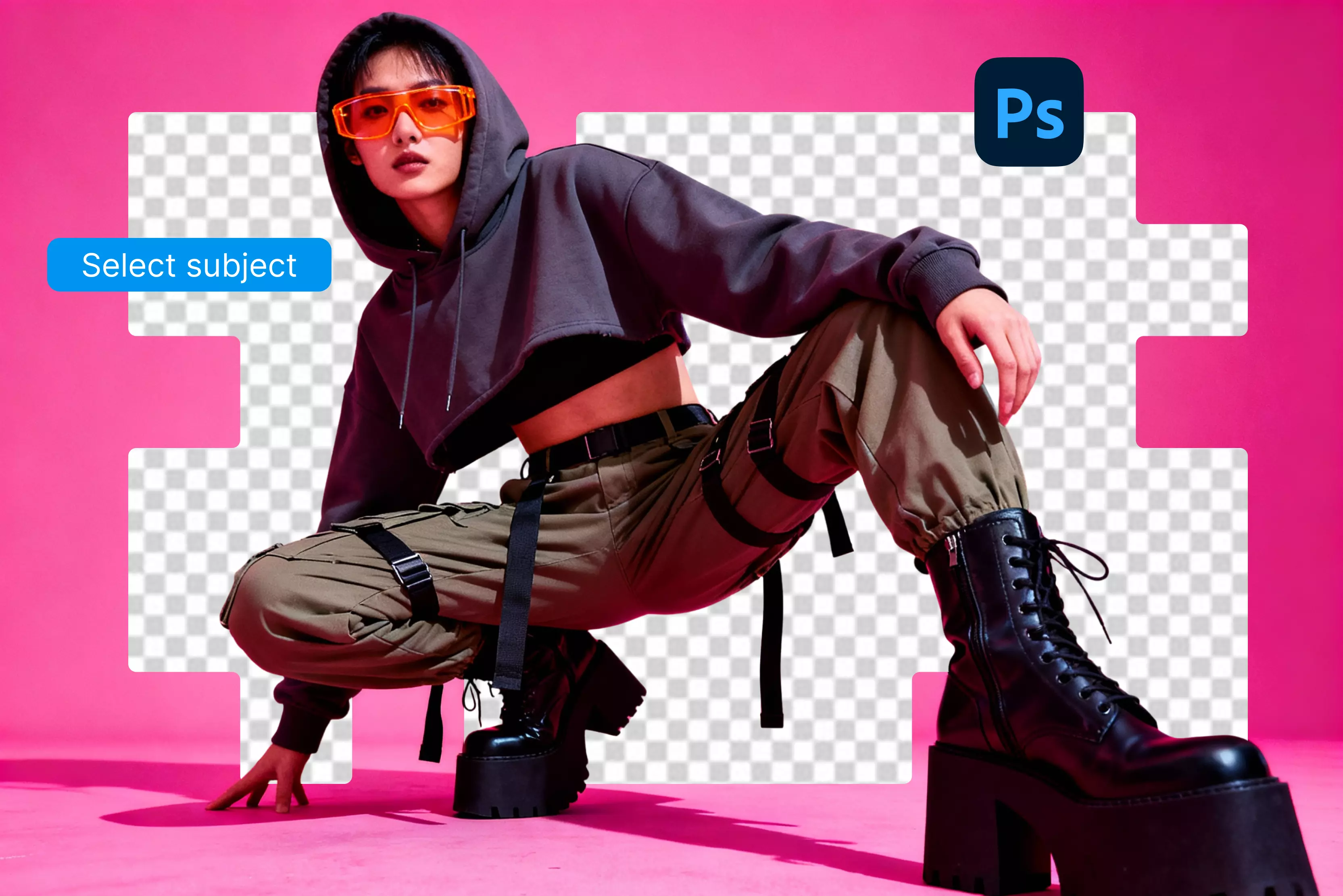We’ve all been there — you click a nice photo or prepare an image for a project, only to find the background looks distracting or completely out of place. A clean background can make all the difference, whether it’s for a presentation, a product listing, or even just a personal design.
Now, when it comes to editing, most people think of heavy tools like Photoshop. But what if all you have is Microsoft Paint? Believe it or not, Paint can handle basic background removal.
While the classic version of Paint is limited, newer updates have made things much easier. Paint 3D introduced the Magic Select feature, and the latest Windows 11 Paint goes a step further with a one-click option.
In this guide, we will explore all the ways you can remove background in different versions of Paint — from Windows 7’s classic method to Windows 10’s Paint 3D and the upgraded tools in Windows 11. Along the way, I’ll also share some tips and alternatives that can help you achieve cleaner, sharper results without the need for complicated editing software.
Can you remove the background in Paint?
Microsoft Paint has been bundled with Windows for decades, and almost everyone has used it at some point to crop, resize, or add quick edits to an image. But when it comes to removing a background, the classic version of Paint is quite limited. It was built as a basic drawing program, so you won’t find a ready-made button that instantly removes backgrounds.
That doesn’t mean it can’t be done. With a little patience, Paint offers a few tools you can combine to get similar results. The Free-form Selection Tool allows you to draw around an object and separate it from the rest of the picture. When used along with Transparent Selection, you can copy only the subject without bringing the original background along.
If any extra pixels remain, the Eraser Tool helps clean up edges manually. It’s a slower process, but it works for simple photos. Later versions of Paint improved on this. Paint 3D, which comes with Windows 10, introduced the Magic Select option that makes cutting out a subject much easier. And on Windows 11, the redesigned Paint now includes a Remove Background button, which makes the entire task as simple as a single click.
How to remove background in Paint (old version)
The older version of Paint doesn’t have a quick background remover, but you can still get the job done by performing a few more steps. It’s all about using the selection tools in the right way.
Here’s how you can do it step by step:
- Open your image in Paint by right-clicking the file, selecting Open with, and choosing Paint.
- Click the Select menu and pick Free-form selection, then carefully trace around the part of the picture you want to keep.
- Go back to the Select menu and turn on Transparent selection so the background doesn’t come along.
- Right-click your traced area, choose Cut, and then paste it onto a fresh canvas or a new background.
- Save the final image as a PNG file, since PNG supports transparency while JPEG does not.
Best methods to remove background in Paint (most searched queries)
Over time, various versions of Paint have provided different methods for handling background removal. From the classic Windows 7 toolset to the newer Paint 3D and the latest Windows 11 update, each comes with its own method. Let’s look at the most commonly searched approaches.
1. How to remove background in Paint 3D
Paint 3D was introduced in Windows 10, and it is better than Paint. Its Magic Select feature allows you to quickly cut out a subject. It’s faster, easier, and works well for images with clear backgrounds. Faster, easier, and it works well for images with clear backgrounds.
- Open your image in Paint 3D.
- Click Magic Select from the top menu.
- Now adjust the box so it fits close around your image.
- Add or remove parts if needed.
- Click Done to separate the area from the background.
- Remove the background, or save the image as a PNG.
2. How to remove background in Paint (Windows 11)
The newest version of Paint in Windows 11 finally includes a built-in background remover. It’s a simple, one-click solution that makes the process much quicker than older versions. You can instantly isolate the subject and then save it with a transparent background for use in other projects, as Windows 11 Paint now supports transparency and layers.
- Open your picture in Paint.
- Select Remove Background from the toolbar at the top.
- The background will be cleared, leaving only the subject.
- Use the Eraser if you need to clean up edges.
- Save the image as PNG to keep transparency.
3. How to remove background in Paint (Windows 10)
Windows 10 gives you two options, depending on which Paint version you are using. With Paint 3D, background removal is smoother with Magic Select, but no manual tracing is required. Both work, but Paint 3D is quicker and supports every kind of image.
Option 1: Paint 3D
- Open the picture → Use Magic Select → Adjust → Click Next → Refine → Save as PNG.
Option 2: Classic Paint
- Open the picture → Use Free-form selection → Turn on Transparent selection → Cut → Paste onto new canvas → Save as PNG.
4. How to remove background in Paint (Windows 7)
In Windows 7, the old version of Paint is available. Since it lacks advanced features, background removal has to be done manually. The process takes longer, but for simple shapes and plain backgrounds, it’s still manageable with the selection tools.
- Open the image in Paint.
- Select Free-form selection from the menu.
- Carefully trace around your subject.
- Turn on Transparent selection.
- Cut the subject and paste it onto a new canvas.
- Save the file as a PNG.
Expert tips for better background removal in Paint
Working in Paint can feel a little tricky, especially with older versions. A few small habits can make the process smoother and help you get cleaner results without starting over again and again. Here are some practical tips to keep in mind:
- Always save in PNG: JPEG files replace transparency with a white background, while PNG keeps it clear. If you need the subject to blend into other designs or slides, PNG is the safer choice.
- Zoom in for accuracy: Outlining your subject with Free-form selection is much easier when you zoom in. It gives you better control, especially around edges like hair or clothing.
- Use Magic Select when available: If you’re on Windows 10 or later with Paint 3D, Magic Select can speed up the process. It does most of the heavy lifting, and you only need to adjust small details.
- Keep the original backup: Always save a copy of your picture before editing. That way, if something goes wrong, you won’t lose the original image.
Best alternatives to remove the background from an image
Paint can manage basic cutouts, but it often takes too long and leaves uneven edges. If you want faster, cleaner results, there are better options. These tools remove backgrounds more accurately, save time, and even add extra editing features that Paint doesn’t offer.
1. Pixelbin background remover
Pixelbin is made for people who need good-quality background removal. Instead of rough cutouts, it delivers smooth edges and a sharp image, even for high-resolution product shots. It is especially useful for businesses and creators, since it supports bulk editing and works automatically with AI. With Pixelbin, background removal isn’t just easier but also simpler.
Features to know
- Bulk background removal with accurate results.
- Keeps subjects sharp and detailed.
- Supports automation with API integration.
- Works smoothly with large, high-resolution files.
2. Erase.bg
Erase.bg is one of the best for quick background removal without the hassle of performing the steps. Upload your photo, and the tool simply clears the background, leaving you with a clean image having a clear background. It’s ideal for personal photos, resumes, and social media, where you just need a neat cutout.
Features to know
- Instant background removal with a single upload.
- Works well for portraits and casual photos.
- No editing experience required.
- Free plan available for light use.
3. Fotor
Fotor combines easy background removal with editing tools that let you refine the final result. Once the background is gone, you can work on edges, adjust brightness, or retouch the subject—all in one place. It’s easy to use for people who want both a clear background and quick editing afterward.
Features to know
- One-click background removal.
- Edge refinement and touch-up tools.
- Works on desktop and mobile.
- Includes templates for design-ready images.
4. Canva
Canva background remover works directly within its design platform, making it useful for anyone who wants to cut out a subject and place it into ready-made layouts. After removing the background, you can instantly use the cutout in posters, presentations, or social media graphics without leaving the app.
Features to know
- Removes backgrounds in one click.
- Direct use in templates and layouts.
- Simple drag-and-drop interface.
- Collaboration tools for team projects.
Final thoughts
Microsoft Paint has come a long way, from the old manual cutouts in classic Paint to Magic Select in Paint 3D, and now the one-click background removal in Windows 11. These updates make background editing easier, but Paint isn’t the best choice for people who want professional background removal; it works best for beginners.
For sharper results, without performing tough steps, Pixelbin is a stronger option. It delivers clean, reliable cutouts, supports bulk editing, and fits smoothly into workflows. Canva, Fotor, and Erase.bg are also helpful alternatives, but when speed and good quality result matter most, Pixelbin clearly stands out.
FAQs
Yes, but only with workarounds. In classic Paint, you need to use Transparent Selection and save as PNG.
Yes. Paint 3D includes Magic Select, which makes it easier and faster than classic Paint.
No, Paint is a Windows-only program. For Mac users, alternatives such as Canva or Fotor are available.
If you save the image as JPEG, transparency won’t be preserved. Always save as PNG.
Windows 11’s Paint is the best, since it now includes a one-click background remover.
You can, but it’s harder in classic Pain. For better results with less effort, Paint 3D or Windows 11 Paint is recommended.


.webp)










